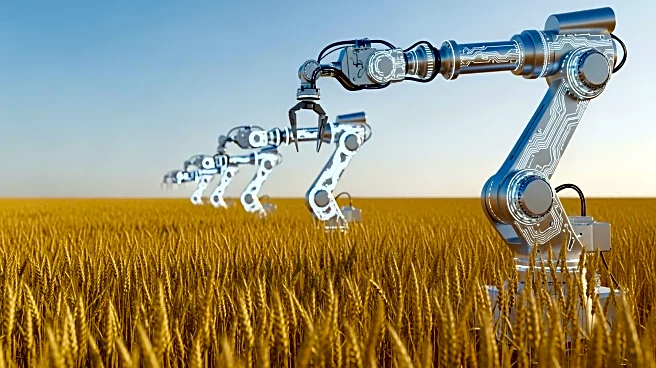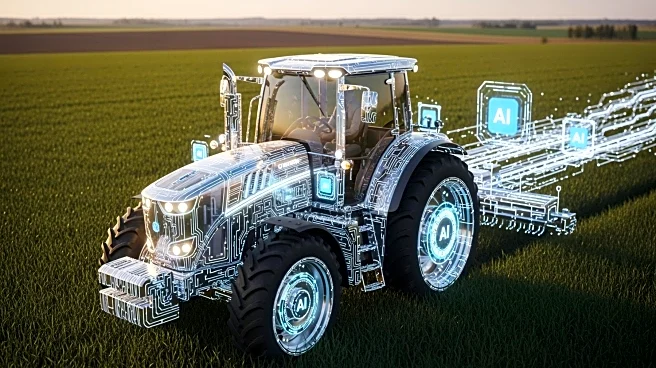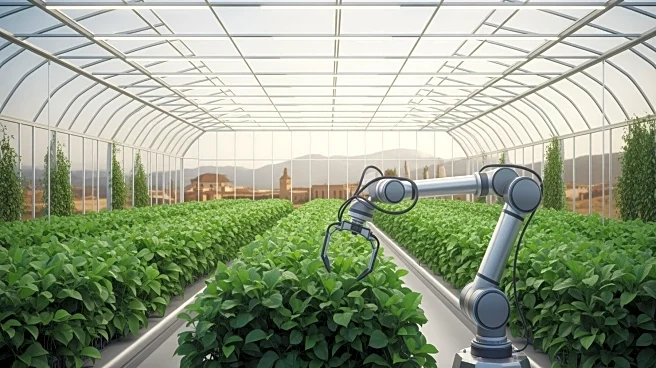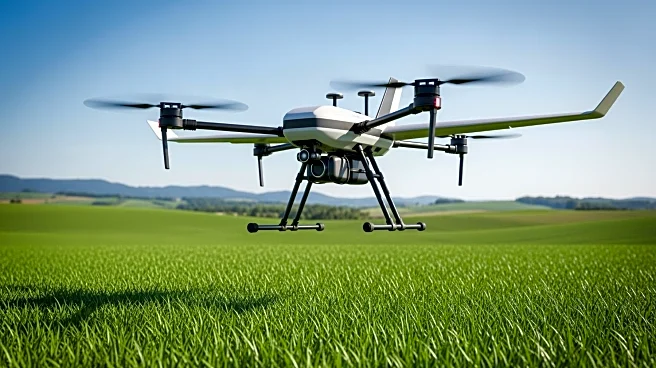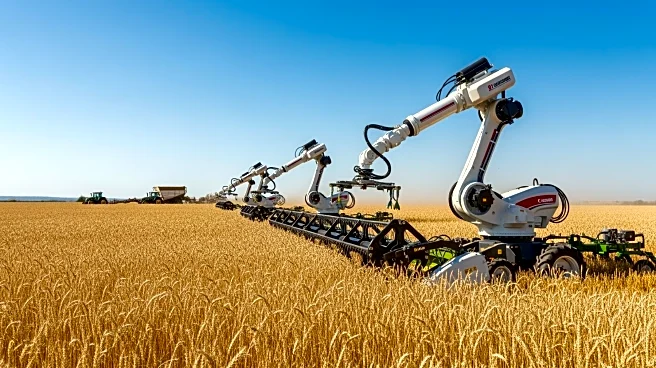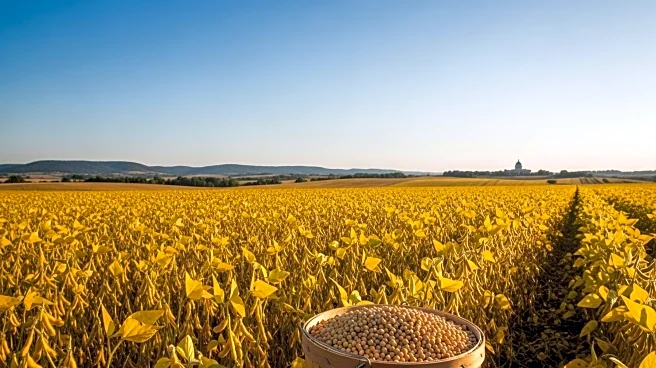What's Happening?
Between 2021 and 2023, the prices of new agricultural equipment have risen by over 20%, leading to increased machinery costs on farms. This surge is attributed to supply chain challenges during the COVID pandemic, inflation, and labor shortages. The National
Agricultural Statistics Service (NASS) reported a significant rise in tractor prices, with the index increasing from 114 in 2020 to 138 in 2023. These price hikes have prompted farmers to reconsider machinery management strategies, especially when replacing older equipment. Combines, which represent the largest investment on farms, are particularly affected, with costs increasing substantially per acre harvested. Farmers are encouraged to harvest over 3,000 acres per combine to lower costs, and partnerships or custom harvesting are suggested as potential solutions.
Why It's Important?
The increase in machinery costs has significant implications for the agricultural sector, affecting farm profitability and competitiveness. As machinery costs rise, farmers may face financial strain, particularly smaller operations that cannot achieve economies of scale. The need to reassess machinery strategies could lead to changes in farm operations, such as forming partnerships or opting for custom harvesting, which may alter traditional farming practices. Additionally, the ongoing supply chain disruptions and inflationary pressures suggest that machinery costs may continue to rise, impacting long-term planning and investment decisions in the agricultural industry.
What's Next?
Farmers may need to explore alternative strategies to manage rising machinery costs, such as forming partnerships to share equipment or increasing the acreage harvested per combine. These strategies could lead to significant cost savings and improved efficiency. Additionally, the agricultural sector may see increased interest in technological solutions that optimize machinery use and reduce costs. Policymakers and industry leaders might also focus on addressing supply chain issues and inflation to stabilize machinery prices. The evolving landscape may prompt further innovation in machinery design and farm management practices.
Beyond the Headlines
The rising machinery costs highlight broader economic challenges, including inflation and supply chain disruptions, which affect various sectors beyond agriculture. The need for strategic reassessment in machinery management reflects a shift towards more collaborative and efficient farming practices. This trend could influence the cultural dynamics of farming communities, encouraging cooperation and shared resources. Furthermore, the emphasis on optimizing machinery use may drive technological advancements in precision agriculture, potentially leading to more sustainable farming practices.
